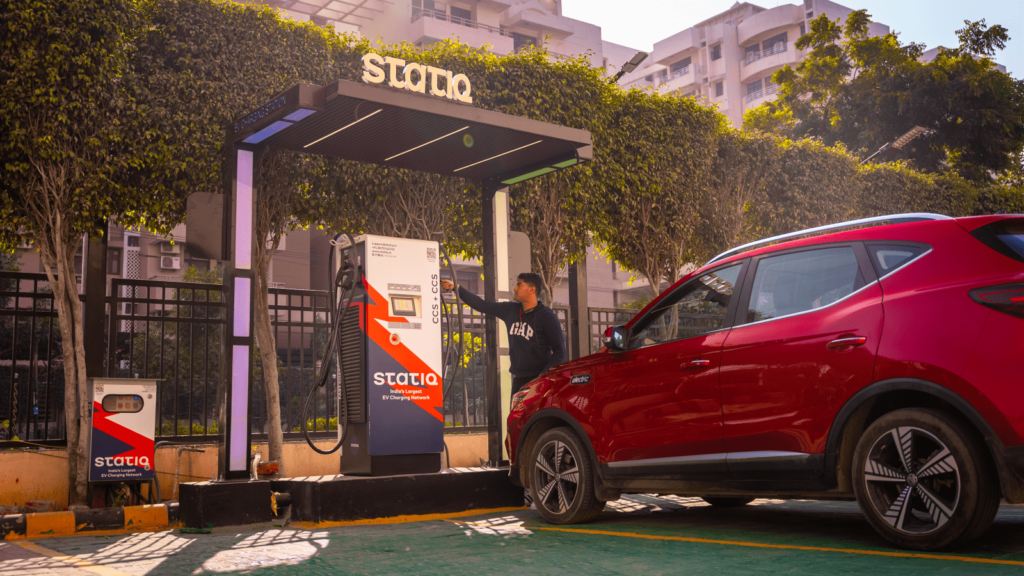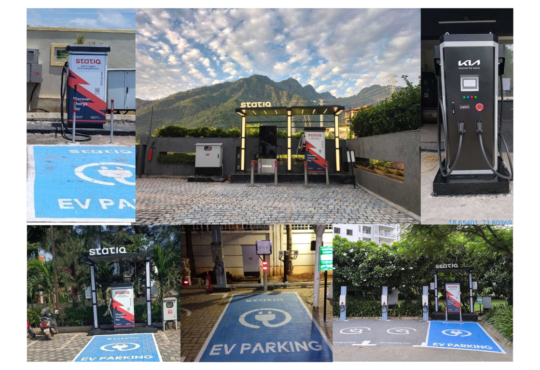
Difference Between Electric Vehicles and ICE Vehicles
Electric vehicles are a popular thing in a town. Automobile makers and even the government are aggressively promoting it in their countries. More and more EV models are entering the market each year with more mileage and better battery capacity. On the other side, combustion vehicles which have been ruling the market for decades, are losing interest among buyers.
But why do we need electric vehicles when we already have good ICE vehicles? In this blog, we will try to dig deep into the key differences between electric vehicles and ICE vehicles and will also understand the advantages and disadvantages of both. So, let’s quickly understand briefly about them.
What is an Electric Vehicle?

An electric vehicle is a type of vehicle that is powered by electricity stored in rechargeable batteries. The batteries are charged by plugging the vehicle into an electric power source, powering an electric motor that drives the wheels. EVs do not have an internal combustion engine and do not emit tailpipe emissions.
Electric vehicles have several benefits over traditional gasoline-powered vehicles, including lower emissions, reduced dependence on fossil fuels, and potentially lower operating costs.
EVs have emerged as the sustainable mobility option and many big players in the automobile industry have entered this domain with their EVs, such as:
- Tata Motors
- JBM Auto
- Olectra Greentech
- Mahindra Electric mobility
- Ola Electric Mobility
- Ashok Leyland Electric
- Hyundai
- Hero Electric
- Menza Motors
- Lohia Auto
- Kia Motors
- Ather Energy
- Piaggio Vehicles
- Kinetic Green
Advantages of Electric Vehicles
- Lower Emissions: EVs produce zero tailpipe emissions, which means they do not contribute to air pollution and greenhouse gas emissions compared to internal combustion engine vehicles.
- Energy Efficiency: Electric vehicles are more energy-efficient than gasoline-powered vehicles, which means they use less energy to travel the same distance.
- Lower Operating Costs: EVs have lower operating costs than traditional vehicles because electricity is generally less expensive than fuel, and electric motors require less maintenance than internal combustion engines.
- Reduced Dependence on Fossil Fuels: Because they don’t use gasoline or diesel, electric vehicles can help reduce dependence on fossil fuels,
- Quieter and Smoother Ride: Electric vehicles are generally quieter and smoother than gasoline-powered vehicles because they don’t have a noisy internal combustion engine.
- Tax Incentives and Rebates: In many countries, governments offer tax incentives and rebates for purchasing electric vehicles, making them more affordable for consumers.
Overall, electric vehicles have the potential to offer significant benefits in terms of environmental sustainability, energy security, and economic savings. However, they also have some limitations and challenges that must be addressed.
Disadvantages of Electric Vehicles
- Long Charging Duration: However, there are no such disadvantages of electric vehicles, but one of the common challenges that EV users face is longer charging duration. Generally, EVs take 40 minutes or sometimes an hour to charge an EV which refrains people from preferring electric vehicles for long trips.
Many companies have introduced fast chargers for electric vehicles that fully charge the vehicle in just 20 minutes. Statiq DC Fast Chargers are one such charger that uses a 60 KW gun to charge the electric vehicle.
- Insufficient Charging Infrastructure: India still needs more EV charging stations to promote a smoother EV transition. Many interested buyers hesitate to buy EVs because of insufficient charging infrastructure. But at present, the EV industry is growing, and there is an enormous possibility of more EV charging stations across India, even in tier-2 and tier-3 cities.
Many private players have entered this industry and working toward strengthening the EV charging infrastructure in India. Statiq is a leading EV charging station provider with a presence in more than 70 cities. If we look at it in the long term, then charging infrastructure will no longer be a limitation.
What is an ICE Vehicle?

An ICE vehicle is a vehicle that is powered by internal combustion engines, which burn fossil fuels such as gasoline or diesel to generate power. Internal combustion engines have been the dominant technology for powering vehicles for over a century and include a range of different designs, such as the four-stroke engine and the diesel engine.
However, they also have several drawbacks, including higher emissions of greenhouse gases and other pollutants compared to electric vehicles and dependence on finite fossil fuel resources.
Despite these limitations, internal combustion engines continue to be widely used in the automotive industry because they are cheaper to buy as compared to EVs. Although there has been increasing interest in electric vehicles as a more sustainable and environmentally friendly alternative.
Advantages of ICE Vehicles
Internal combustion engine (ICE) vehicles have been the dominant technology for powering vehicles for over a century. Some of the key benefits of ICE vehicles include the following:
- Established Infrastructure: The infrastructure for gasoline and diesel vehicles, including fuel stations and repair shops, is well-established in many countries, which makes it easier to find fuel and get maintenance and repairs.
- Fast Refueling: Petro/ diesel vehicles are typically preferred for long trips over electric vehicles as they can be refuelled quickly, which makes them more suitable for long-distance travel and time-sensitive applications like emergency services.
- Lower Initial Cost: ICE vehicles are generally less expensive to purchase than electric vehicles, although operating costs may be higher over the vehicle’s life.
It’s important to note that ICE vehicles also have significant drawbacks, including higher emissions of greenhouse gases and other pollutants, dependence on finite fossil fuel resources, and potential noise pollution.
Additionally, the cost of electric vehicles is decreasing rapidly, and the infrastructure for charging stations is also improving, which could make them more competitive with ICE vehicles in the future.
Disadvantages of ICE Vehicles
Internal combustion engine (ICE) vehicles have a number of significant disadvantages, particularly when compared to electric vehicles. Some of them are listed below:
- Environmental Impact: ICE vehicles are a major source of air pollution and greenhouse gas emissions, which contribute to climate change and have negative health impacts on people and the environment.
- Dependence on Fossil Fuels: ICE vehicles require gasoline or diesel fuel, which are finite resources and may contribute to geopolitical tensions.
- Operating Costs: ICE vehicles have higher operating costs than electric vehicles because they require more frequent maintenance and repairs, and fuel costs are typically higher than electricity costs.
- Noise Pollution: ICE vehicles generate a significant amount of noise pollution, particularly in urban areas, which can impact the quality of life and public health.
- Lower Energy Efficiency: ICE vehicles are less energy-efficient than electric vehicles, requiring more fuel to travel the same distance.
- Limitations in Performance: ICE vehicles may struggle with acceleration and performance at high altitudes or in extreme temperatures and may require more maintenance and repairs in harsh conditions.
- Fuel Cost: Due to uncertainty in fuel prices, many people find it difficult to manage their expenses due to the rise in petrol/diesel prices.
Overall, the disadvantages of ICE vehicles outweigh the advantages in terms of sustainability, public health, and cost-effectiveness. Many governments and companies are actively working to transition to cleaner and more sustainable transportation systems.
Hope this blog will help you to know the key differences between electric vehicles and petrol/diesel vehicles. If you want to know more about which vehicle you should choose when buying a new car, read our blog “Electric Vehicles v/s Fuel Vehicles: Which One Is Better?”



